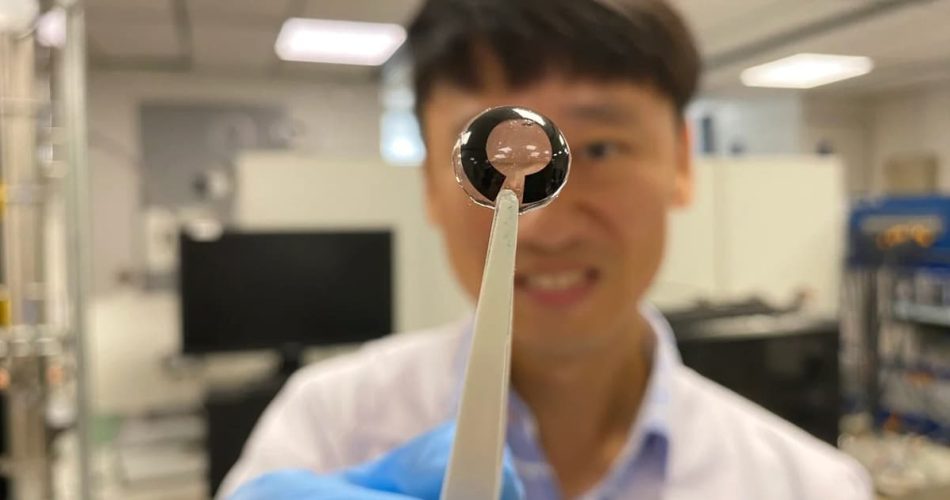
Scientists from Nanyang Technological University in Singapore may have found a solution to the challenge of powering “smart” contact lenses. These lenses, which have been developed for various purposes such as monitoring glaucoma and delivering medication, require a safe and discreet power source. The most common methods of powering these lenses involve metal electrodes or induction charging, both of which have drawbacks. To address this issue, the Singaporean scientists have developed a tear-fluid-charged ultra-thin battery.
The proposed battery is only 0.5-mm-thin and incorporates water and a coating of an enzyme called glucose oxidase. When the battery is immersed in the basal tear fluid that coats our eyes, the enzyme reacts with the sodium and chloride ions in the fluid, generating an electrical charge within the water in the battery. In lab tests, the battery was able to produce a current of 45 microamperes and a maximum power of 201 microwatts, which is sufficient to wirelessly transmit data from a smart contact lens for at least 12 hours.
While the battery lasts for up to 200 charge/discharge cycles in its current form, it is important to note that similar lithium-ion batteries typically last for 300 to 500 cycles. To ensure optimal performance, the researchers recommend placing the lens in a saline solution overnight for at least eight hours to fully charge it for the day.
This innovative development opens up new possibilities for the future of smart contact lenses. The research paper detailing this breakthrough was recently published in the journal Nano Energy.
Source: Nanyang Technological University

